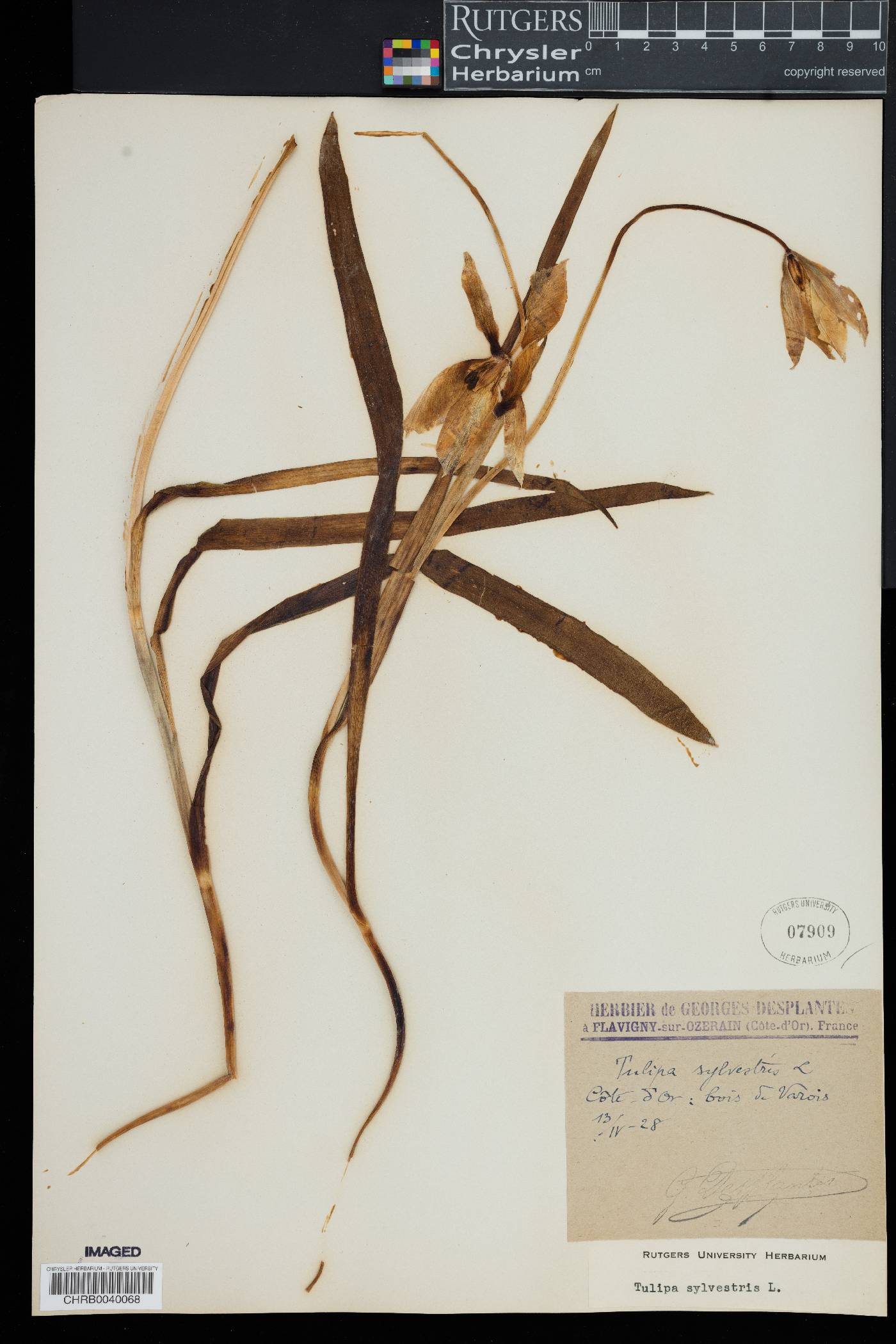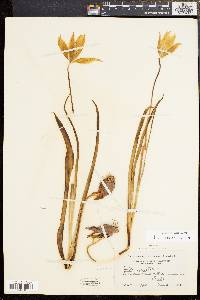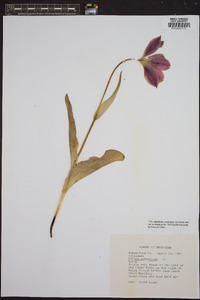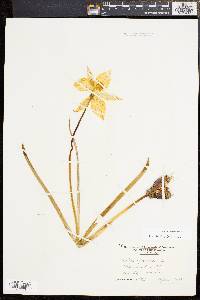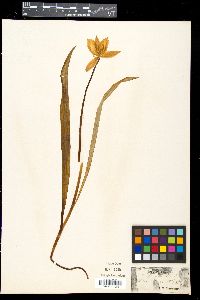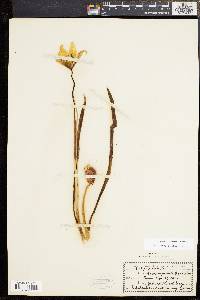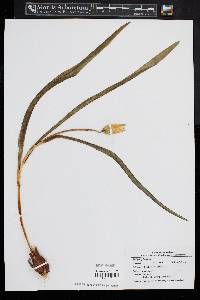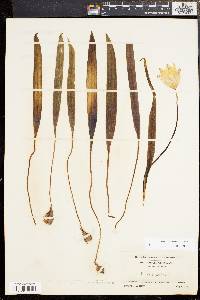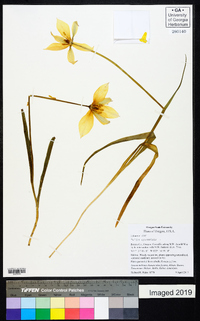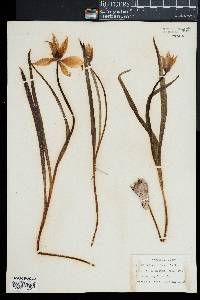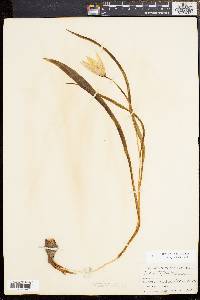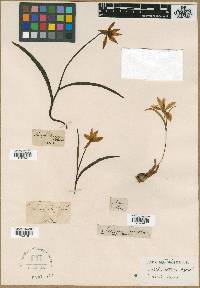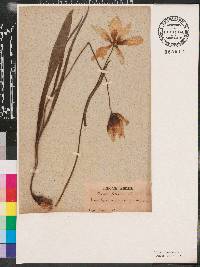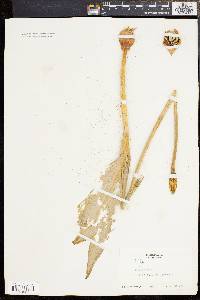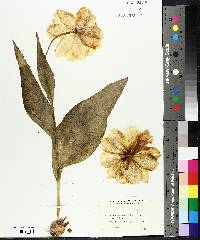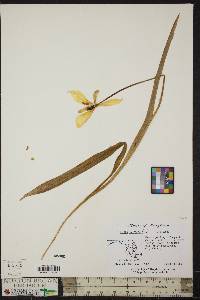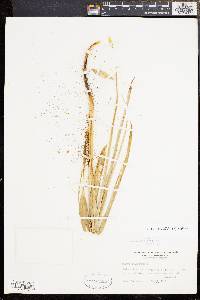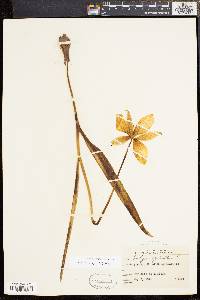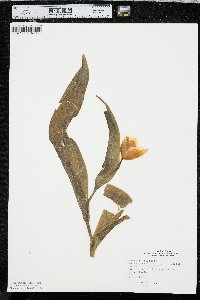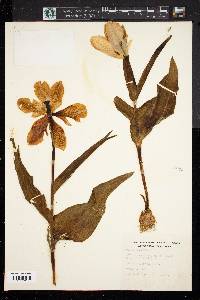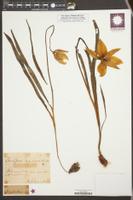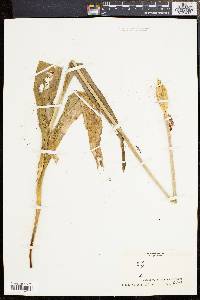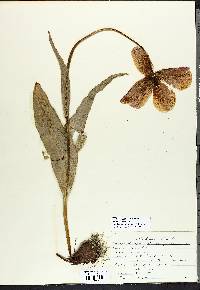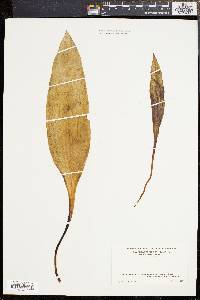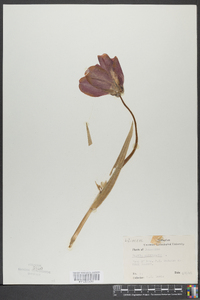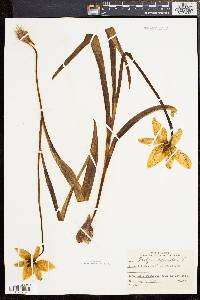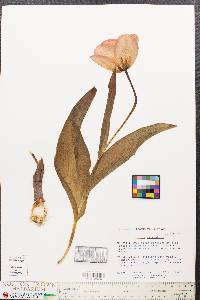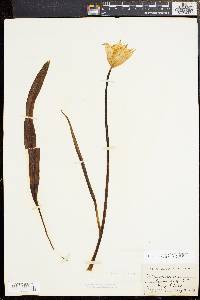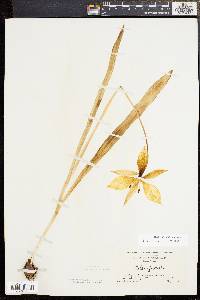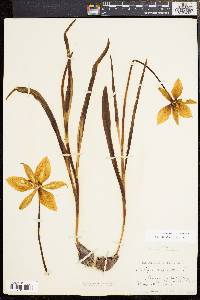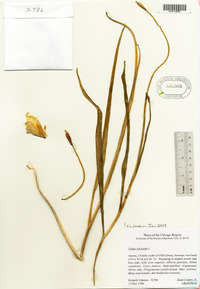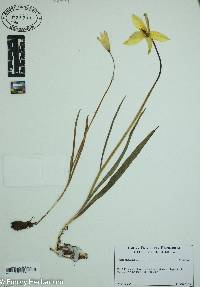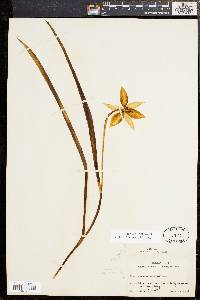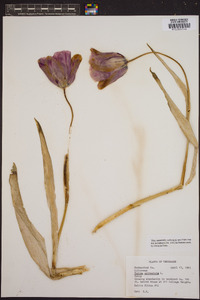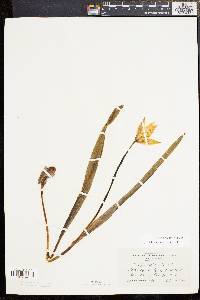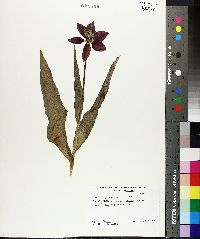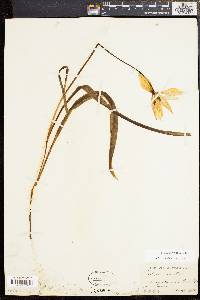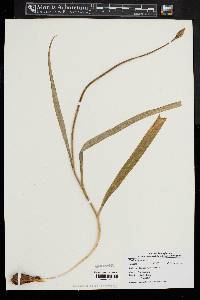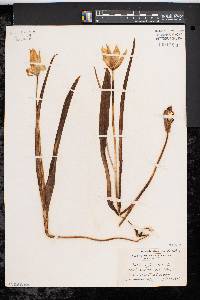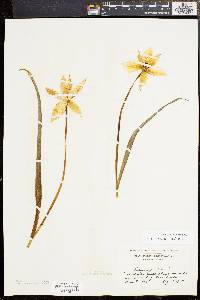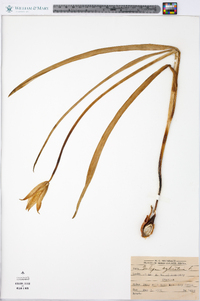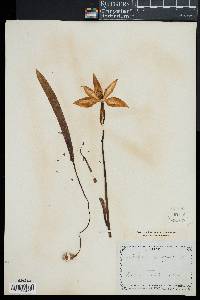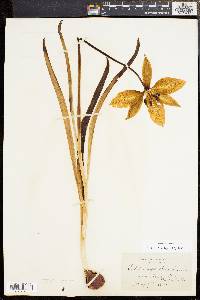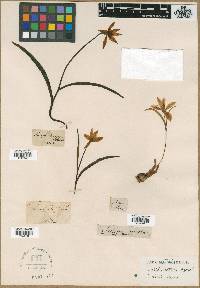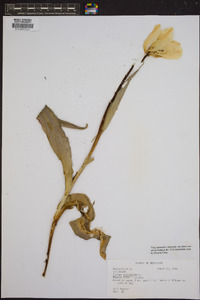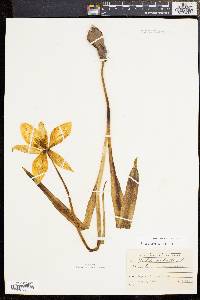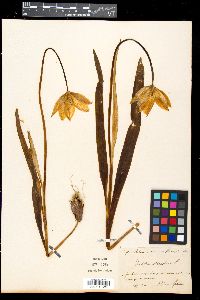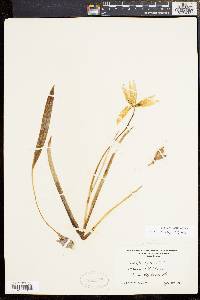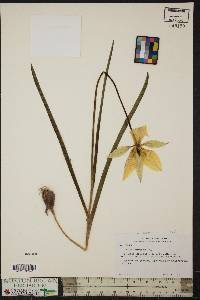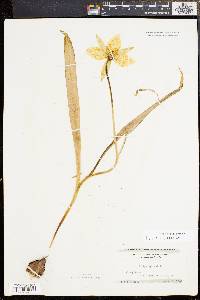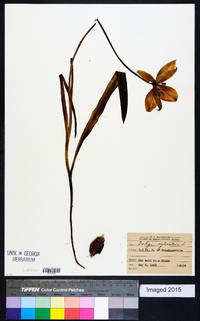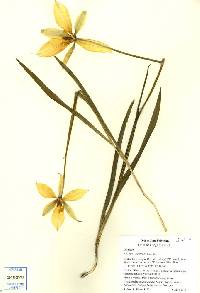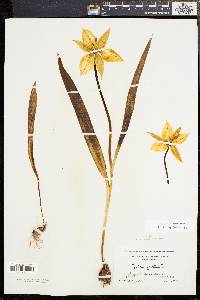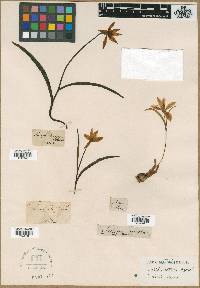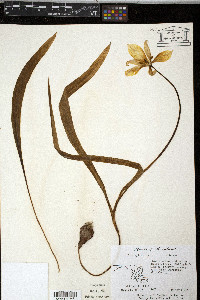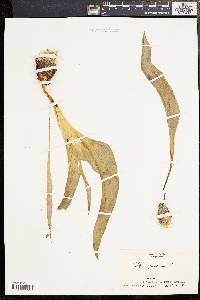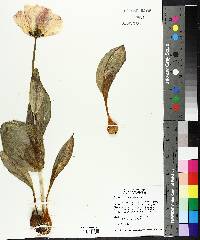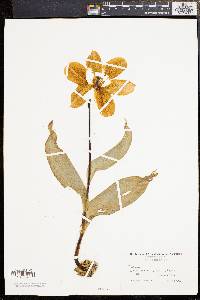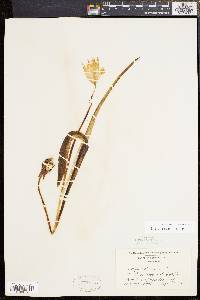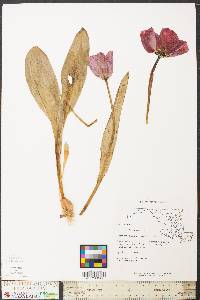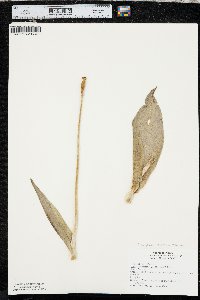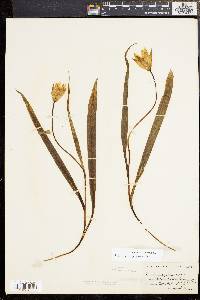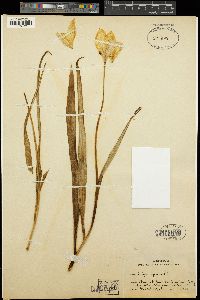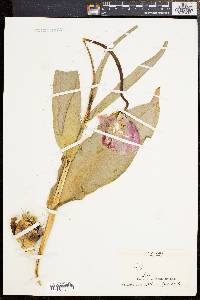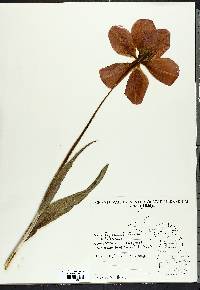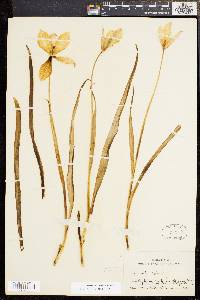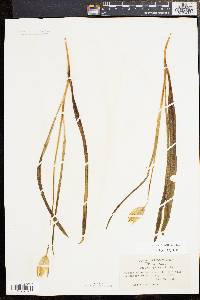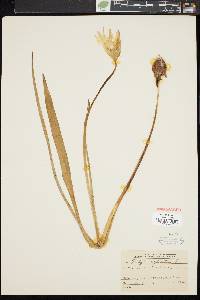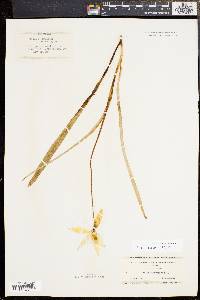
|
|
|
|
Family: Liliaceae
Wild Tulip
|
Plants (10-)30-45 cm; bulbs often stoloniferous, ovoid to obovate, 1.8-4(-5) × 1-2.5 cm; tunics brownish black, papery, apex with rusty, straight hairs adaxially. Leaves 2-3(-4), widely spaced, more or less declinate, channeled; blade dark green, linear to linear-lanceolate, keeled, glabrous; proximal cauline blade 25-35 × 1-1.5(-2) cm. Flowers 1(-2), nodding in bud; tepals 6(-8), golden yellow, midrib abaxially tinged with green; outer tepals narrowly elliptical to subrhombic, 30-40(-65) × 8-15(-25) mm, apex acuminate; inner tepals elliptic-oblanceolate, 30-40(-60) × 15-20(-25) mm, apex shortly acuminate; filaments flat, 8-14 mm, pubescent; anthers orange, 4-9 mm; ovary bright green, 10-12 mm. Capsules 15-30 × 14-16 mm. 2n = 36. Flowering late spring. Roadsides, fields, waste places; 0--200 m; introduced; Md., Mass., Pa.; Europe, n Africa, naturalized c, sw Asia, Siberia. The exact native range of Tulipa sylvestris in the Old World is unknown. Stoloniferous, offset droppers account for much of the vegetative spread of this triploid species.
Perennial herb with a bulb stem 30 - 45 cm tall Leaves: two or three, alternate, widely spaced, more or less declined, 25 - 35 cm long, 1 - 2 cm wide, becoming smaller upward, linear to oblong, channeled, keeled, somewhat fleshy. Flowers: single, upright, golden yellow, tinged green on midrib, bell- to cup-shaped, with six distinct tepals. Outer tepals 3 - 4 cm long, 8 - 15 mm wide, narrowly elliptical to nearly diamond-shaped with a pointed tip. Inner tepals 3 - 4 cm long, 1.5 - 2 cm wide, elliptic to reverse lance-shaped with a short-pointed tip. Stamens six. Anthers orange. Ovary bright green. Fruit: a capsule, 1.5 - 3 cm long, about 1.5 cm wide, ellipsoid to nearly round, three-angled, leathery. Seeds many, flat. Bulb: brownish black (coating), 1.8 - 4 cm tall, 1 - 2.5 cm wide, egg-shaped to reverse egg-shaped, rusty-haired at apex, papery. Similar species: No information at this time. Flowering: May Habitat and ecology: Introduced from Europe. A rare escape from cultivation to fields, roadsides, and waste places. In the Chicago Region it is known only from Kane County, Illinois, where a single specimen was collected along a bike path in shaded woods. Occurence in the Chicago region: non-native Etymology: Tulipa is the Latin version of the Arabic word for turban. Sylvestris means "of the woods" or forest-loving. Author: The Morton Arboretum Lvs 2 or 3, linear-oblong, to 2 cm wide; stems 3-5 dm; tep lanceolate, acute, 5 cm, yellow within, the outer set green or greenish outside; 2n=24, 48. Native of s. Europe, established in Pa. and Md. Apr., May.
Numerous garden hybrids as well as various species-tulips are cult. and may persist locally, but do not appear to be established. Gleason, Henry A. & Cronquist, Arthur J. 1991. Manual of vascular plants of northeastern United States and adjacent Canada. lxxv + 910 pp. ©The New York Botanical Garden. All rights reserved. Used by permission. |
This project was made possible in part by the Institute of Museum and Library Services [MG-70-19-0057-19].
Powered by Symbiota

